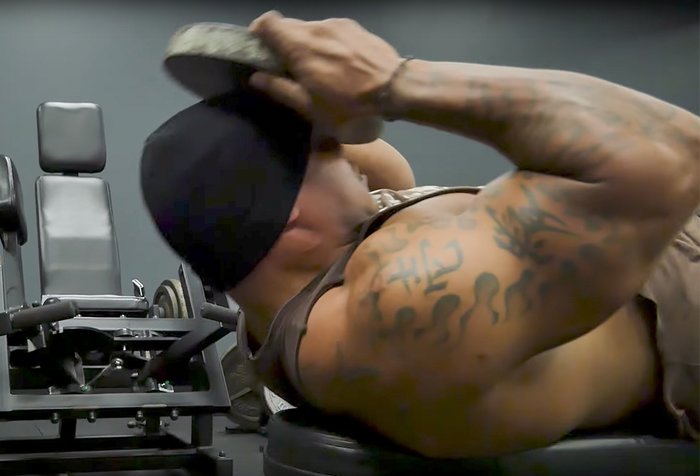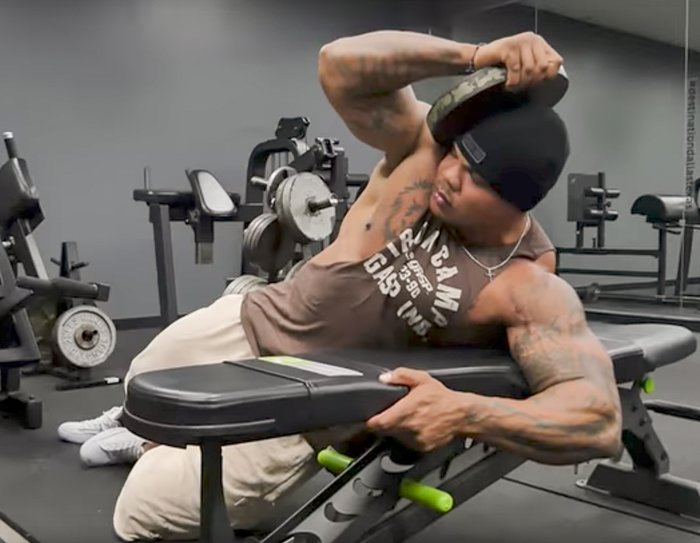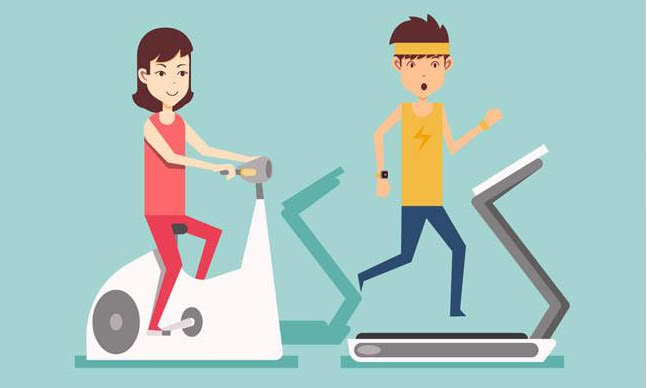Your neck supports the weight of your head and protects the nerves that carry sensory and motor information from your brain to the rest of your body. In a perfect world, one without twists and curls, your neck would be both strong and flexible. But it's not that way, per se. Whether you lift weights, box, play soccer or do other high contact activities, neck training should be at the core of your program. To build overall neck strength and maximize hypertrophy, you need to train extension, when your head comes back and flexes, as you move forward. You need to train rotation, when you twist your neck to look at your shoulders, and lateral flexion, when you move your head from side to side. This routine provides neck training to strengthen your neck in all these areas. The goal is to do this routine 1-3 times a week.
Neck Rotation
Attach a band to a bar, power rack or other non-movable object. Place the forehead of the eyes slightly above the eyes and then leave the immovable object so that the eyes are moderately pulled over the head and neck. While maintaining good posture and a straight neck, turn your head to the right so that your chin is over your right shoulder, then return to a centered position and turn your chin over your left shoulder. Perform 25 reps, alternating from one side to the other for a total of 50 reps. Do 2 sets.
Training Tip: This exercise is more of an activation exercise than a ball-to-wall heavy pull. Protect your neck rather than too much resistance, not too much. If you want to reduce resistance, move closer to an immobile object; increase it, move away. Always start your neck workout with this exercise, as it provides great activation and puts a wrap on your warm-up.
Perform this exercise with strict form. Turn your head as comfortably as possible since the range of motion is very short. If you don't have a band, do these rotations manually with your hands resisting the rotation of your head.

Neck flexion
Wear a comfortable child's cap or place a folded towel on your forehead to pad the weight plates you will be using. Lie on a bench with your head hanging off the floor and your feet on the floor. Place the plate on your forehead. Move slowly, straightening your head until your chin touches your upper chest. Stretch your neck back for a comfortable stretch. Repeat for 3 sets of 20 reps.
Training Tip: Again, start with the lights off, then gradually increase the load by 2-1 / 2 pounds or less each time. Focus on strict execution of the exercise to achieve a full range of motion. These neck movements should not be explosive or raw. Perform them under control.

Neck Extensions
Lie down on your shoulders, over your shoulders. This is the starting position. Place a weighted plate firmly against the back of your head and lower your head until you feel a comfortable stretch. Under control, simply lift your head. Bring your head up to this extended position and then lower it a little. This is one rep. Do 3 sets of 20 reps.
Training Tip: For your first session, do this exercise without adding weight. Add up to 2-1 / 2 pounds for each subsequent session. When you perform the exercise, make sure your neck is able to move through the full range of motion with a good form and at a controlled pace. If you don't have the right, use your hands or band to resist your neck when you show up.

Lateral flexion of the neck
Place a folded towel on a folding board. Place yourself vertically on a flat bench with your legs on the floor and your left forearm on the bench. Place the weight and towel on the right side of your head and hold it in your right hand. Move your head up to your right shoulder by bending your neck sideways, then bend it sideways again. This is one rep. Do 15 reps, switch to the other side, and do another 15 reps. Complete two sets of 15 on each side.
Training Tip: Normal sized people can do this exercise by lying on a flat bench, while larger people must approach the bench from the side. Follow a strict controlled rhythm throughout the entire range of motion.

Popular Articles
-
Most want to recommend to your home goodies, spend a little money can also have a big happiness!

-
 Would it be better to drink milk in the morning? Several mistakes about drinking milk should be avoided
Would it be better to drink milk in the morning? Several mistakes about drinking milk should be avoidedApr 17, 2025
-
 Working out and not working out are two completely different lives.
Working out and not working out are two completely different lives.Apr 17, 2025
-
 Recommend a few good things to make your kitchen sophisticated
Recommend a few good things to make your kitchen sophisticatedApr 17, 2025
-
 Lung-running radish soup
Lung-running radish soupApr 17, 2025
-
 Treadmill PK elliptical machine, which is more fat burning?
Treadmill PK elliptical machine, which is more fat burning?Apr 17, 2025







Comments
0